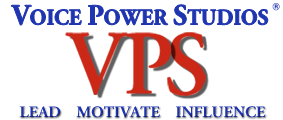Now for a more personal take on speaking effectively on Zoom. As I’d said, one of my former voice clients, Richard Draper, agreed to speak to me about his experience on Zoom.
Before coming to me, Richard had already had years of training and time spent both in front of and behind the camera. As a longtime broadcast television reporter, former media manager for Intel and now the New Mexico state director for a nationwide health system nonprofit, Richard has trained plenty of others on how to speak well—with confidence and authority—on camera.
Projection
In my capacity as media manager for the New Mexico Intel site, from 1993 to 2004, part of my job was to help coach site leaders on how to speak to the press. That meant showing employees how to project themselves—their voices—powerfully to the local community.
Obviously, having come from 20 years in broadcast television news business, the projection of one’s voice is key. But people tend to feel that that is natural and so they often take it for granted. Unfortunately, most people just aren’t that good at it. And they could use a little bit of fine tuning in their voice and how they speak to other people.
Using your voice is a skill—like any other. A few people are naturals at it, but most people, as I have found in the business world, could benefit from coaching and from tips on how to improve their speaking voice and the projection of voice as part of their overall persona.
It doesn’t come as naturally as most people seem to think. The breathing, the projection techniques, all of that is, again, not natural to most people.
It’s Zoom—But It’s Pretty Much TV
So people should be more aware of how they’re coming across, especially in videoconferencing. During the pandemic, people started and have begun to use Zoom and other platforms like it. Whether you can see people or not, that’s a factor. In in the age of Zoom, visuals were added to voice. And so on a Zoom call you’re on television, essentially.
And oftentimes, many employees of companies are on a Zoom call with several other boxes of people. Onscreen—like television. Some people come across strongly, other people don’t. So there are some visual skills that go beyond just voice—from lighting to certain facial gestures to other things beside voice. But voice is clearly one of the most powerful tools on a Zoom call or in videoconferencing that helps distinguish you. Especially from others who have weaker personal presentation skills.
The Power of the Pause
Even today, not that many people have a lot of experience with speaking on Zoom or on other forums. Oftentimes, they slur their words or speak too quickly. You need to slow it down and use the power of the pause to be more effective over a television-like medium like Zoom.
One example I used when I taught at Intel, I used two examples of the power of the pause in communicating. And the example I liked was John Wayne. If you ever watch his old Westerns, the John Wayne movies from the 1930s, there’s no pause in his voice. He talks pretty rapid fire through those movies in that period. But then an acting coach and a vocal coach told him, You know, if you pause more mid-sentence, you’re going to be more interesting to people who are watching you. They’ll listen more closely. And they did. And that’s how he developed that style we associate with him. And that made for a much more interesting John Wayne on screen.
Modulate
And modulate your voice so it’s not a boring monotone sound. Most people tend to speak in a very narrow focal range—up and down. The voice goes up, the voice goes down. That’s where modulation comes in: Modulate your voice so it’s not a boring monotone sound. Make your voice interesting by modulating it.
That also has to do with projection. Some people just, by nature, speak softly, and don’t quite project their voice enough. And there are other skills that most people aren’t aware of: breathing, how you move your mouth. These are all things that you teach: how you can project your voice, there are a number of skills that go into that.
Be Professional
You still see people doing Zoom calls from their home and whatever kind of slapdash office setting they’ve set up—that factors in as well. That’s good to be doing these meeting from someplace you’re comfortable in, but don’t get too comfortable. It should still look professional. The lighting, for example. People have gotten better at that—even during the Zoom pandemic. But in the beginning, people were at home where the light levels were low or way too hot, or the backgrounds were either too busy or over time, even fake.
Over time, people started to realize what were more effective techniques to appear on Zoom over time. But be careful about self directing. Especially if you’ve had broadcasting experience, you can’t overdo that. No show-off stuff. No anchor voice. Be subtle.
Zoom Brands You—So Let Your Voice Be Your Brand
What Zoom and these other platforms do, they kind of brand you. Once other people listen to you, they’re more likely to listen to your message. So how do you stand out in a crowd? How do you distinguish yourself? Vocal technique is one of those ways to help communicate your message better.
You always talk about having a smile in your voice. So on Zoom, exude a kind of a calm but don’t over talk. My bias is that, within the first three or four seconds when I hear someone the first time, I’ve made up my mind about them.
Pause and Pause Again
So the pauses, as I say, that’s one of the vocal tricks that I think are over helpful, but anybody on a Zoom call could benefit from these simple tricks.

